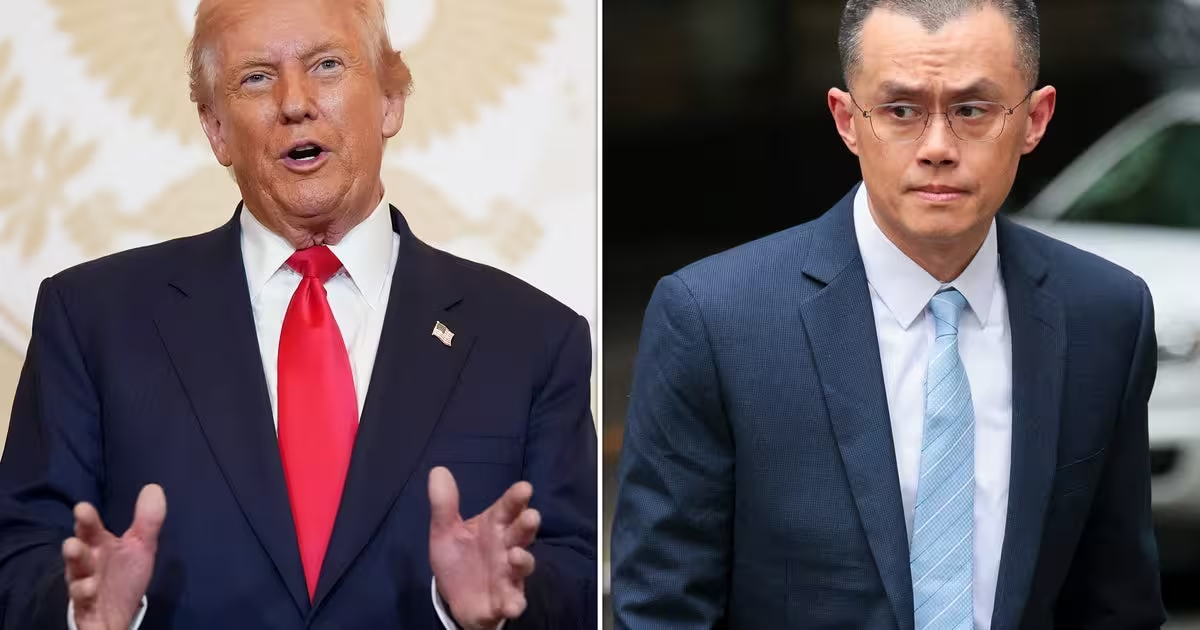6 Minutes
Weekly crypto recap: major moves from Binance to Mt. Gox
This week's roundup covers a busy stretch across crypto markets and regulation. Highlights include Binance enabling spot trading for World Liberty Financial (WLFI), new disclosures from Tether, Coinbase beating revenue expectations, and high-profile legal and operational fallout from collapses and court decisions. Below we break down each story and explain what it means for traders, investors, and crypto infrastructure.
Binance, the Trump family and WLFI: a high-profile listing
Binance US on Oct. 29 allowed World Liberty Financial (WLFI) — the Trump family’s crypto venture — to begin spot trading. The WLFI listing has reignited discussion around how exchange listings and strategic partnerships can transform token market caps and liquidity. According to multiple reports, Binance’s support helped WLFI’s stablecoin surge in market cap, driving rapid inflows and a major valuation uplift.
Why this matters for exchanges and political risk
When a major exchange lists a politically connected project — particularly a stablecoin — it can accelerate adoption and liquidity. That growth often attracts regulatory scrutiny because stablecoins intersect with payments, banking, and compliance regimes. Investors should weigh trading opportunities for WLFI against potential legal and reputational risks tied to political exposure and regulatory reaction.
Legal developments: Thodex, Custodia, and Kalshi
Turkey’s high-profile Thodex saga concluded with the death of founder Faruk Fatih Ozer while in custody after his 2023 conviction for fraud and money laundering. Ozer had been sentenced to an extremely long term under local statutes, highlighting the severe criminal consequences that can accompany exchange collapses and client fund misappropriation.

Custodia denied Federal Reserve master account
The 10th Circuit Court of Appeals upheld a lower-court decision blocking Custodia, a Wyoming special-purpose depository institution, from compelling the Federal Reserve to grant it a master account. This decision is another reminder that regulatory access to central bank infrastructure remains tightly controlled and that banks and crypto-native chartered entities face steep legal hurdles in obtaining Fed payment-system privileges.
Kalshi pushes back on New York regulators
Event contract platform Kalshi filed a federal lawsuit challenging New York’s classification of prediction markets as illegal gambling. Kalshi argues federal law and CFTC oversight should preempt state gaming rules — a case with potential implications for prediction markets, derivatives, and regulatory jurisdiction across crypto-linked trading products.
Tether posts multibillion-dollar profit — stablecoin power shift
Tether disclosed approximately $10 billion in profits across the first three quarters of 2025. The USDT issuer’s reported net income eclipsed several large banks’ quarterly profits over the same period, underscoring how large stablecoin issuers now rival traditional financial institutions in profitability and balance-sheet scale.
Implications for stablecoins and market concentration
Massive profits at stablecoin issuers can indicate strong transactional demand and capital efficiency, but they also raise questions about concentration, reserve transparency, and systemic risk. Regulators and institutional counterparties are likely to scrutinize both operational practices and reserve management more closely as stablecoin market share grows.
Exchange and market updates: Coinbase, Mt. Gox, and XRP
Coinbase reported $1.9 billion in third-quarter revenue, beating expectations and showing significant quarter-over-quarter growth. Earnings per share outperformed analyst forecasts, reflecting stronger trading volumes and institutional demand. For market participants, Coinbase’s results point to continued centralization of spot and custody services among large exchanges.
Separately, the Mt. Gox rehabilitation plan received another extension: the trustee delayed creditor repayments until Oct. 31, 2026, after procedural complications. This extension keeps unresolved claims from the defunct exchange in limbo and underscores how legacy hacks and insolvencies can drag on for years.
In India, the Madras High Court issued interim protection preventing WazirX from reallocating a user’s XRP holdings to cover exchange losses from a prior exploit. The order highlights growing judicial protection for individual crypto holders amid exchange recovery efforts and loss-sharing arrangements.
Industry partnerships, acquisitions and tech upgrades
World and Mythical Games announced a partnership to implement “proof of human” ID verification to deter bots in Web3 gaming — a development that could improve user integrity for play-to-earn ecosystems. Meanwhile, Mastercard is reported to be in advanced talks to acquire Zerohash, a stablecoin infrastructure firm, for $1.5–$2 billion, signaling continued interest from legacy financial firms in crypto-native payments tech.
Ethereum Fusaka testing and Bitcoin movements
Ethereum completed final Fusaka testing on the Hoodi testnet, following successful dress rehearsals on Holesky and Sepolia. The continued upgrade cadence is crucial for layer-1 protocol stability and future scalability enhancements.
SpaceX moved another 281 BTC (a transfer reported at over $31 million) from Coinbase Prime custody to a new wallet — an example of ongoing balance-sheet management by corporate holders and the importance of custody best practices for institutional Bitcoin holdings. btc -2.91%
Other notable developments
Western Union signaled plans to issue a stablecoin as digital wallet adoption climbs, pointing to incumbents embracing tokenized payment rails. Former FTX founder Sam Bankman-Fried released a 15-page claim asserting alleged solvency at FTX and Alameda before the 2022 collapse — claims that will intersect with ongoing litigation and creditor recovery debates.
Finally, corporate Bitcoin accumulation continued: a publicly disclosed corporate buyer added 390 BTC for roughly $43.4 million, maintaining a long-term acquisition strategy that keeps macro pressure on BTC supply in the spot market. That strategy has helped institutional holders grow bitcoin reserves to substantial levels over time.
Takeaways for traders and investors
1) Exchange listings and partnerships can rapidly amplify token liquidity, but political and regulatory risk must be assessed. 2) Stablecoin issuers are now large financial players; their profits and balance-sheet scale warrant oversight and due diligence. 3) Legal outcomes — from master account access to criminal sentences — will continue shaping custody, banking relationships, and trust in centralized platforms. 4) Institutional activity in Bitcoin and infrastructure M&A suggests further convergence between traditional finance and crypto-native systems.
Stay informed on regulatory developments, monitor on-chain flows, and prioritize custody and counterparty risk management as the landscape evolves.
Source: crypto
Comments
Armin
Stablecoin profits that big.. kinda alarming. Feels like banking but with less rules, curious how regs respond
coinpilot
Binance listing WLFI sounds like a pump with politics attached. Is this even legit? regulators gonna have a field day, lol


Leave a Comment